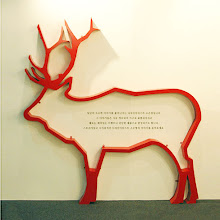Comfort! When you ask a designer, furniture buyer, magazine editor, advertising agency, customer what do we want when it comes to our homes the first answer is always comfort. I'm it's biggest ambassador, comfy sofa, comfy chair, comfy bed, comfy bath, comfy pillows, comfy shoes, comfy trousers. Some say to live in casual comfort is the Holy Grail. BUT is comfort - the thing we strive so hard to achieve - our downfall for a healthy life?
If you are plonked on a sofa, bed, or chair right now American scientists claim you probably have "sitting disease". Apparently we are not moving our bodies enough. Australia is ranked fifth among advanced nations in terms of obesity
after the United States, Mexico, New Zealand and Chile, according to the
OECD. The Wellness Index, compiled by polling firm Roy Morgan Research and an initiative of health company Alere, have found over the last five years 736,000 more adults are now obese in Australia.
Is having a super comfy sofa with slubby cushions and chunky throws causing us to prolong, morning-to-bedtime sitting? Doctors call it sedentary
living and research claims it to play a significant role in many
of the most troublesome health issues of our time, from obesity and heart disease to diabetes to depression. I shudder the amount of hours I have wasted lying on my sofa watching crappy TV.
Until recently, experts considered the antidote to sitting disease to be
formal exercise sessions. But new research is turning that thinking on
its head. As it turns out, just being up and about throughout the day
can be healthier for you than doing a rigorous workout, then sitting the
rest of the time. This then raises the serious question would we be more likely to get up and move around our home if we didn't strive for our cosseted home to be so damn comfortable?
Last year I met a young successful Sydney architect Kelvin Ho, for Sunday Life Magazine, who refused to have a sofa in his home. When he watched the tellie he sat on an uncomfortable wooden stool. He believed by not owning a sofa he would watch what he wanted and wasn't enticed to keep watching. Not having anywhere to really chill out except for the bed he was forced to go outside to surf, cycle, catch up with friends and entertain around his dining table. Kelvin did however give into a designer linen sofa eventually when a serious girlfriend (now his wife) came on the seen.
Perhaps there is something in the idea of minimalist design favoured by the Japanese and British architects John Pawson and David Adjaye. The fewer pieces of furniture we have in our home the more likely we will move around than plonking ourselves in one spot.
New York architects Shusaku Arakawa and Madeline Gins who founded Reversible Destiny Foundation dedicated their life work in aiming to create homes that reduce the aging process and prevent death. "People, particularly old people, shouldn't relax and sit back to help
them decline," he insists. "They should be in an environment that
stimulates their senses and invigorates their lives." Arakawa died at age 73 in 2010 flawing his philosophy of transhumanism, or reversible destiny. The thing is I still think there is something in their radical ideas.
Lets face it though their work is ugly and I personally wouldn't like to live in a house like this. However just like a couture runway show we can learn from and introduce the ideas into our designs in a much more aesthetic and realistic way.
I know this all might seem a little crazy but the fact there is an alarming amount of people in the western world overweight we need to look at solutions in getting us to move around more. And you know what they say when you want to fix something up - always start at home first.












